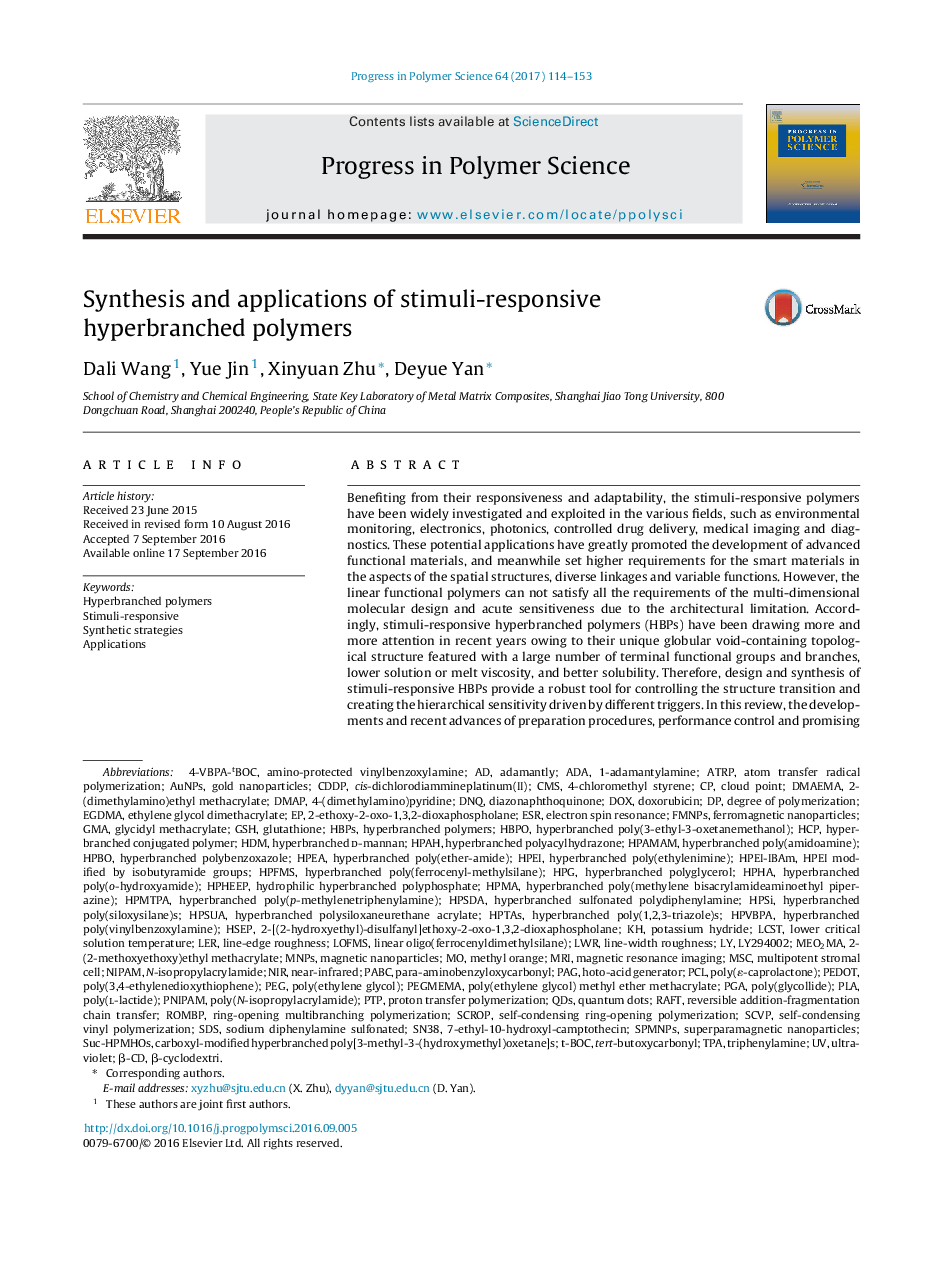| Article ID | Journal | Published Year | Pages | File Type |
|---|---|---|---|---|
| 5207926 | Progress in Polymer Science | 2017 | 40 Pages |
Benefiting from their responsiveness and adaptability, the stimuli-responsive polymers have been widely investigated and exploited in the various fields, such as environmental monitoring, electronics, photonics, controlled drug delivery, medical imaging and diagnostics. These potential applications have greatly promoted the development of advanced functional materials, and meanwhile set higher requirements for the smart materials in the aspects of the spatial structures, diverse linkages and variable functions. However, the linear functional polymers can not satisfy all the requirements of the multi-dimensional molecular design and acute sensitiveness due to the architectural limitation. Accordingly, stimuli-responsive hyperbranched polymers (HBPs) have been drawing more and more attention in recent years owing to their unique globular void-containing topological structure featured with a large number of terminal functional groups and branches, lower solution or melt viscosity, and better solubility. Therefore, design and synthesis of stimuli-responsive HBPs provide a robust tool for controlling the structure transition and creating the hierarchical sensitivity driven by different triggers. In this review, the developments and recent advances of preparation procedures, performance control and promising applications of various stimuli-responsive HBPs have been comprehensively summarized. Besides, the developing trend of stimuli-responsive HBPs is also discussed. It can be found that stimuli-responsive HBPs with different synthetic strategies and diverse performances have manifested more and more versatile applications.
